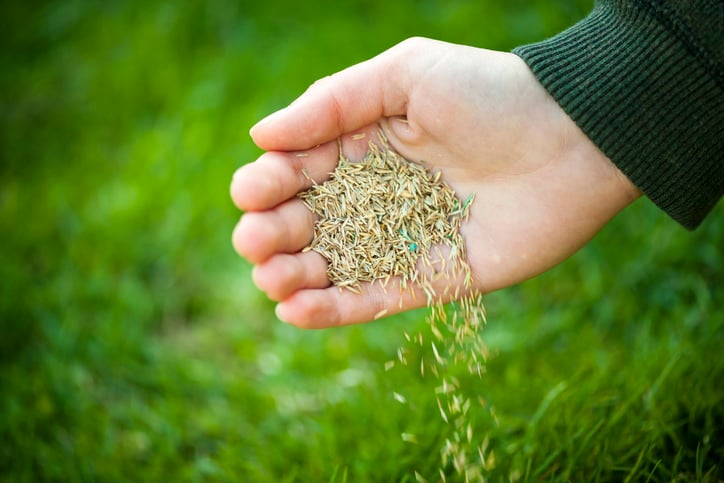How many times has this happened to you? You keep staring at that bare spot of grass, wondering if it’s ever going to come back. You’re convinced that it will, but you get through the summer, and then the fall, but nothing happened. Now it’s November and you think you’re out of time. You’re thinking “There’s no way I can plant grass now.” Not so fast my friend. You can plant grass this time of the year. It’s called dormant seeding.
Dormant seeding, in a nutshell, is when you plant grass during the time of the year your grass is dormant. Now, we’re talking about doing it in the dead of winter with a foot of snow on the ground, but you do have some windows after the growing season has ended to fill in those bare spots or beef up thinning areas of your lawn.
So, let's learn a little bit more about dormant seeding, when you should do it, and what types of grass seed work best.
Benefits Of Dormant Seeding
If your neighbor sees you planting grass in November, there’s a good chance they’ll question what you’re doing. But there are some legitimate benefits, in this case, to implement a dormant seeding strategy.
The biggest benefit is that the seed will be in place and ready to sprout as soon as the weather warms up and the growing season begins. The goal is to get the grass seedlings to outcompete the sprouting weed seed. And if you use an overseeder, there’s less concern about seed being washed out or washed down to other parts of your yard. But your biggest concern will be losing the seed to rot, or having it eaten by insects like grubs.
When To Dormant Seed Your Lawn
In Michigan, the best time of the year to repair or seed a new lawn is from mid-August to September. But you never know what the weather may be like, so if Mother Nature cooperates, it may be feasible to sow into November and still achieve acceptable establishment.
In any case, dormant grass seeding is done in the late fall. Typically, it happens after the soil temperature drops below 50°F. This works especially well if a site's construction (let’s say you’re building a house) is finished in the fall but the seed was not planted prior to the typical growing season planting dates. Because the initial soil temperature for seed germination is around 50°F, the goal of this method is to delay germination until spring.
What Type Of Seed Should You Use?
For all dormant seeding, use perennial grass species. To encourage fall growth, more cereal rye, a cool-season annual grass, can be added.
Fall Lawn Care Strategy
Dormant grass seeding is an integral part of any fall lawn care plan. Whether you didn’t have time before the typical planting season ended, or you really thought that patch of grass was going to fill in on its own, dormant seeding is a great safety net.
If you like a little help putting together your lawn care strategy for next year. We’d be happy to help. The snow may be flying soon, but Lush Lawn’s experts work all year round to make sure the people we serve always have the best-looking lawn on the block.
